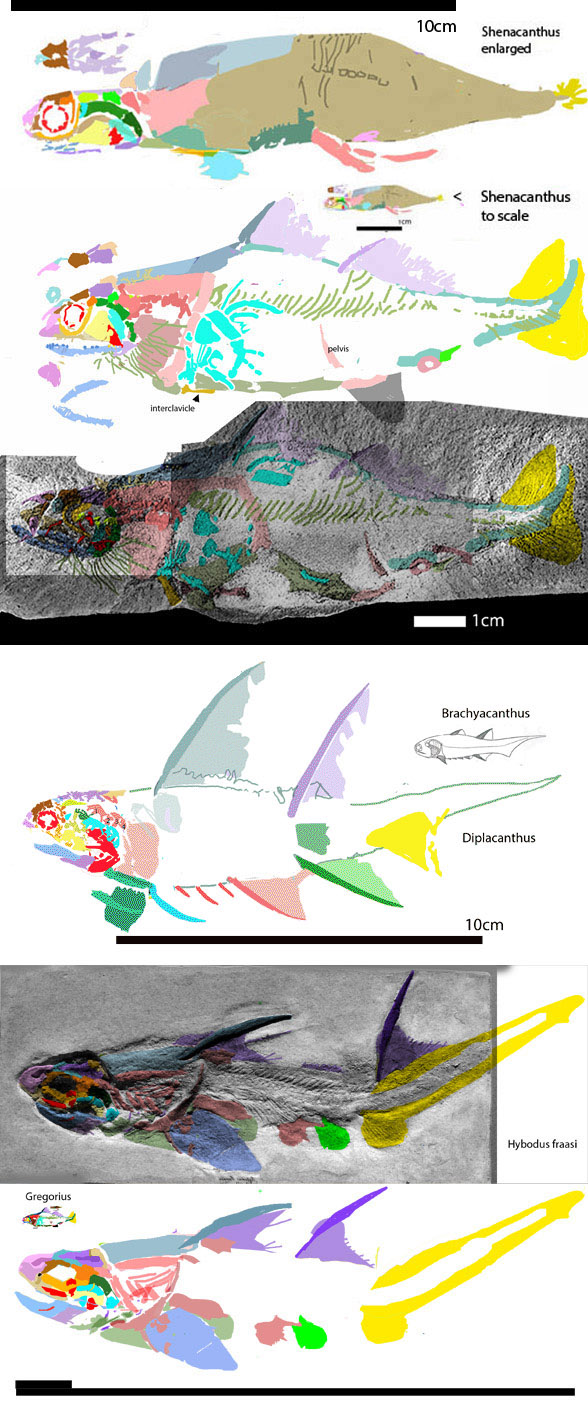As progress on the fish subset of the LRT continues
several now obvious – but previously overlooked – connections continue to appear. Here’s the latest one (Fig 1). I did not see this coming, but perhaps should have anticipated it from the start.
Here’s the problem: I thought the long spines on Diplacanthus (Fig 1) were derived traits. Turns out they are relatively primitive.
Sometimes ‘convergence’ turns out to be homology.

Figure 1. The spiny shark with really big spines turns out to be a basal taxon in the Acanthodii, rather than a highly derived one. Here the overlooked Gregorius – Diplacanthus connections is made.
This particular shark-bony fish split occurred before
the Early Silurian based on Early Silurian Shenacanthus (Fig 1). Carboniferous Gregorius (Fig 1) is a late-survivor of that earlier radiation at the base of sharks and kin.
Solving problems
is what the LRT does well, if it is given correct scores based on DGS methodology. In this case, the human operator (wetware) is usually the weak link.
This appears to be a novel hypothesis of interrelationships
that links tiny Silurian fish with sharks on one branch and spiny sharks plus the clade of ray-fins that includes Amia and Salmo. If not, please provide a citation so I can promote it here.
I could tell this was coming up over the horizon for several months. Correcting several scores shed new light on this match-up.
